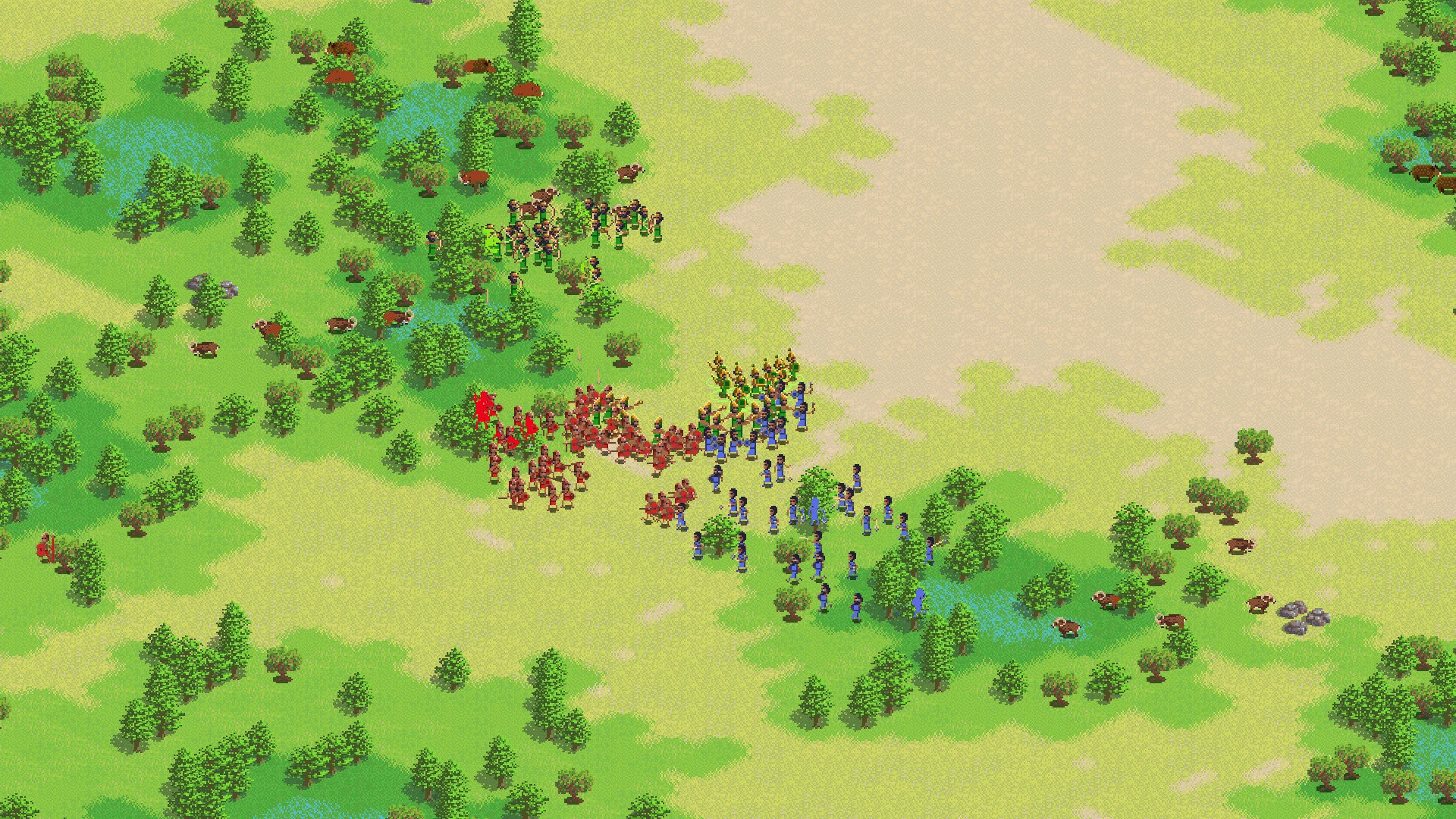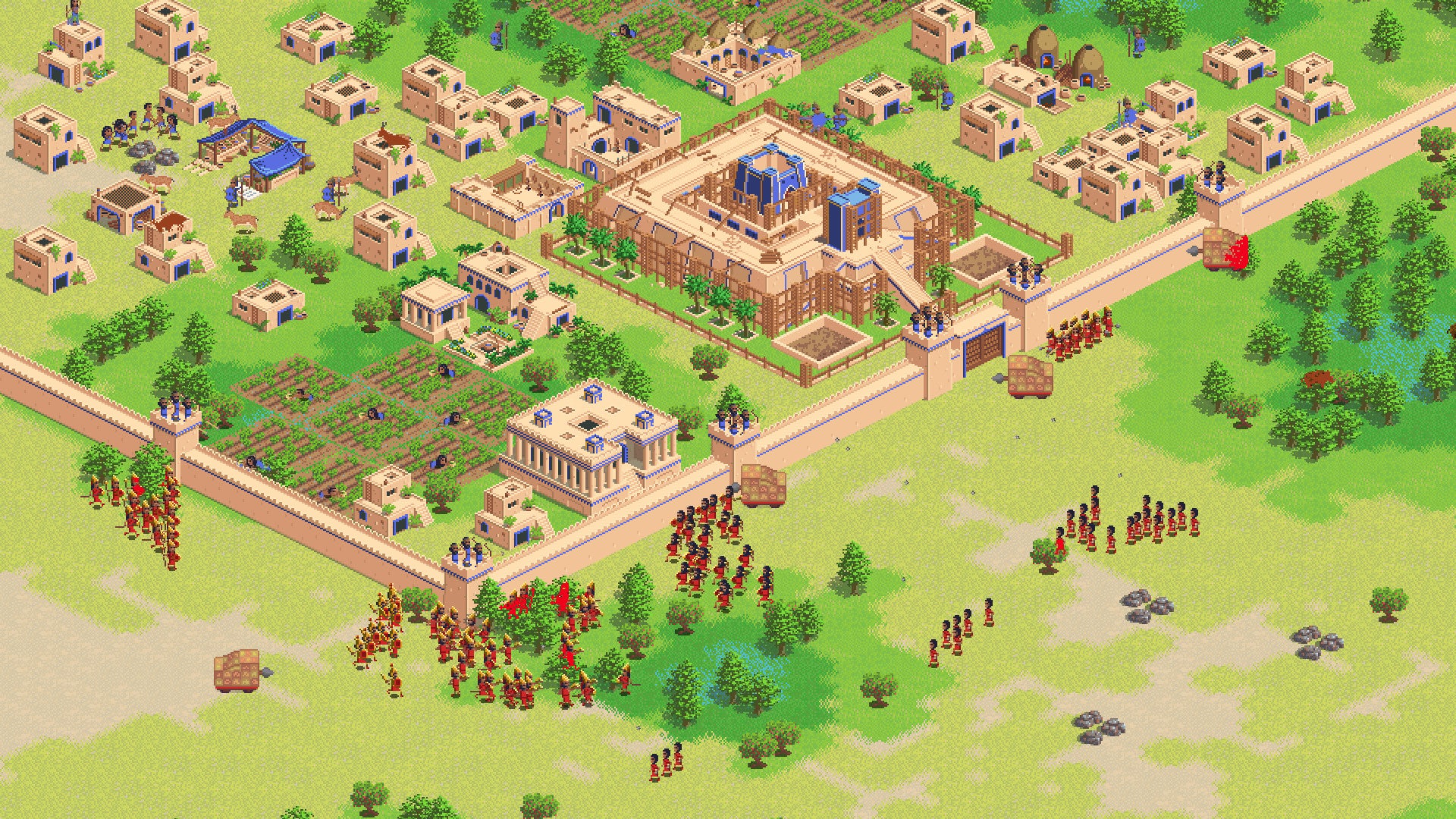Developers Anders Groenningsaeter and André Read from Wield Interactive looked to the past as they refined The Fertile Crescent’s economy. “Since childhood, André and I have been equally fascinated by RTS games and the Bronze Ages,” Groenningsaeter explained to me. “How we’ve been inspired by history has shaped the game. During the Bronze Ages, the usage of coins hadn’t taken root yet. It was still to a large extent a barter economy, and food played an important role.” “People would, for example, stockpile barley and use it as a currency as part of their trade. At the same time, food is a necessity and always consumed," he went on. “So we experimented with resource systems that reflect this in early prototypes.” It’s TFC’s emphasis on food management, informed by Bronze Age civilisations, that puts a fresh spin on an old genre having a resurgence in popularity. Farms, trees and deer are a familiar sight to Age Of Empires players. What’s new in The Fertile Crescent, you ask? Your food stores deplete over time as you maintain an army, chewing into your economy (and, despite the economic focus, combat is given its fair share of attention, complete with units, counters, and upgrades). On the flip side, excess food grants productivity boosts and speeds up villager training. While this does mean that enemy farms are a great raiding opportunity, so are yours. But the Fertile Crescent doesn’t just feature new ideas, it alters obsolete ones. Groenningsaeter remarked that “another inspiration for the in-game economy system has a different story. We were avid RTS game fans during the ‘golden age’ of RTS games in the late 90s and early 2000s. As a teenager, André noticed fewer releases of AAA RTS games every year, until one day some started to declare that the genre was more or less ‘dead’.” The pair started looking into discussions around the genre and what had happened, wanting to find out what people like and dislike about RTS games in general. This approach to shaping TFC is made apparent by several tweaks to the standard RTS formula. “If it ain’t broke” didn’t cut it for Groenningsaeter and Read. “Usually, having more villagers means more economic output, and as soon as you forget about training additional villagers and your enemy does not, you’re at an economic disadvantage. However, is this really an interesting choice to make?” asked Groenningsaeter. “Therefore, we thought, why not streamline this and add automatic villager production? That frees you up to focus on, in our opinion, more interesting decisions.” Age Of Empires IV’s latest move to remove animation cancelling echoes the same sentiment. I appreciate modern sensibilities like these, decisions that rethink the application of strategy. So, while resource management forms the backbone of your settlement, that ongoing food-cost for an army means you’ll have to manage your granaries better if you want a strong military. TFC’s upkeep system is similar to that of turn-based Total War campaigns but with a key difference: its repercussions occur in real-time. “We wanted some kind of consequence to having a larger army, which reflects history,” said Read. “Having a standing army is expensive. So in TFC, you pay an initial sum to train warriors and then they continue to consume food. Having an army that you don’t use is a waste of resources.” Read then described how this decision rippled across The Fertile Crescent’s many layers, explaning that it ties in with the food surplus mechanic. “Having a food surplus boosts knowledge generation and villager training. Therefore, you need to balance your army expenses against stockpiling a food surplus.” Save up your food for a production boost instead of spending it on soldiers and you’ll be caught off-guard by enemy raids. Then there’s the riot system, which is where The Fertile Crescent turns food into a double-edged sword. Lose your food supply to mismanagement and, in the words of Groenningsaeter, “there is only so much a population can tolerate famine before they lose their patience.” To aid your pomegranate pursuit, the game introduces you to soil fertility, a staple of classic city-builder games that gives you yet another decision to make in The Fertile Crescent. “Adding soil fertility means you have to plan your village layout around it to maximize food production, which ties in nicely with the food surplus mechanic. The clay pits taking up valuable farming space also leads to some interesting decisions,” noted Read. This means you’ll be switching your resource priorities based on how the match proceeds, adding another layer of strategy to TFC. The Fertile Crescent’s city-building-esque twists serve the interests of both newcomers and longtime fans. Despite its humble beginnings, the early access title does justice to an era largely unexplored in gaming and shakes the cobwebs off the strategy genre. Read laid out his vision by saying that “we tried to combine everything that we especially like about the genre and included what we read other people like, in one pot. And then, we’ve tried to change up elements that we think aren’t adding to the fun factor.” As someone who grew up with city-builders and real-time strategy experiments, I’m happy to report that Groenningsaeter and Read did their homework and it shows, right from TFC’s nuanced economy chains to how food governs military engagements. With multiplayer support, an upcoming “roguelike” Conquest mode and a campaign, The Fertile Crescent has reinforcements on the way to back up its ambition. “Sid Meier once said that a game is a series of interesting choices and that’s definitely what we are attempting to offer,” said Groenningsaeter. A horizontal knowledge tree with distinct upgrade paths makes up for the lack of additional civilizations to pick from. And while I want upgrades to alter the appearance of units and buildings, I can’t fault the game’s “less is more” visual approach. What if these upgrade paths offer unique units that represent said playstyles? Minor AI issues aside, there’s plenty of meta potential here and I can’t wait to see where Wield Interactive takes The Fertile Cresent. It’s time to give the retooled sickle a spin.

